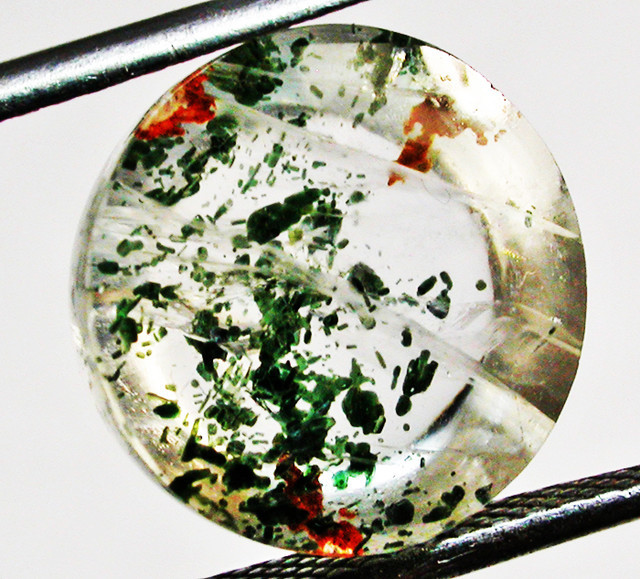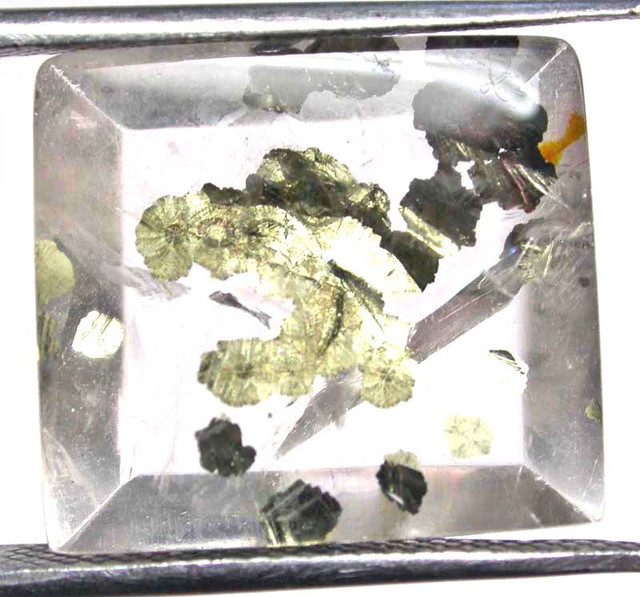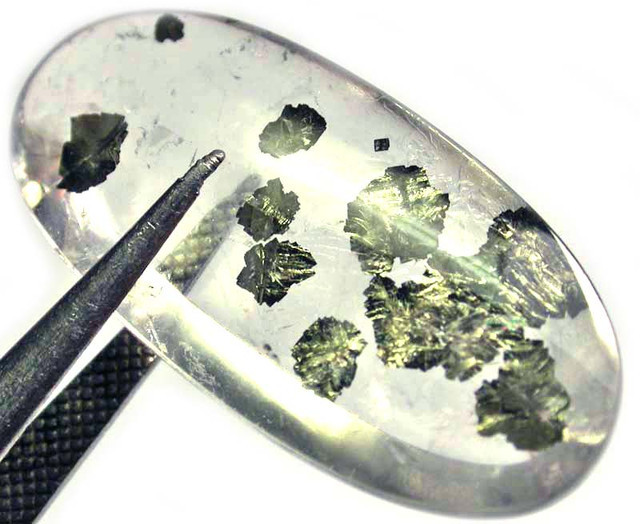
Objavljeno 18th Oct 2018
Izmijenjeno 4th Jun 2025
Kvarcni dragulj s inkluzijama tinjca
Kvarc s tinjcem obično ima neke specifične značajke. Postoje različite vrste tinjca; najčešći je srebrno-bijeli muskovit; dok je biotit tamne boje što je prilično uobičajeno. Paragonit koji sadrži sodu i tinj je najrjeđi među svima. Međutim, biotit i muskovit se pojavljuju samostalno, poput gnajsa.




Zapravo, tinjci se nalaze u neravnim pločicama ili listovima, bez ikakvog kristalnog ruba, ili u listastoj ili lisnatoj nakupini. U međuvremenu, muskovit i biotit često su okruženi sličnim rascjepom. Tinjci se obično naginju duž svojih ravnina rascjepa u smjeru škriljevca, i to je razlog zašto su stvorili neobičnu fisilnu kvalitetu takve stijene.
Također su često zaobljeni, iskrivljeni ili izokrenuti, što se jednostavno može uočiti pomoću njihovih refleksija s površine cijepanja. Spomenuto cijepanje tinjca obično se nalazi duž površine njihove pukotine ili se škriljevasta ravnina stijene čini potpuno zatvorenom njome, te može stvoriti dojam da je to jedini prisutni kamen.
Kako bi se kvarc sagledao izbliza, drugi neizostavan element, poprečni prijelom, mora se analizirati pomoću leće. Kvarc je obično dostupan u agregatima ili nepravilnim zrnima, a ona su ponekad raspoređena u sitne leće, kao i u tanke slojeve, u skladu s premazom tinjca.

Pretražite Gemstone Encyclopedia
Povezane aukcije
povezani članci
Svatko ima dragi kamen koji odgovara njegovom horoskopskom znaku. Poznati su i kao vaš Zvjezdani Kamen. Saznajte više o ovom kamenju i saznajte koji je vaš Zvjezdani Kamen.
10th May 2018
Izvorno su se kamenje rođenja ili drago kamenje povezivali sa horoskopskim znakom ili mjesecom rođenja osobe. Saznajte koji je vaš kamen i pogledajte kamenje koje imamo na prodaju.
8th Feb 2021
Na tržištu postoji toliko mnogo alata za testiranje dragog kamenja, ali koji su glavni alati potrebni za jednostavnu analizu? Pogledajmo četiri alata za testiranje dragog kamenja.
4th Mar 2020
Najnoviji članci
Otkrijte povijest, svojstva, vrijednost i savjete za njegu kamena pileće krvi, rijetkog i živopisnog dragog kamena cijenjenog zbog svojih upečatljivih crvenih uzoraka i kulturnog značaja.
8th Dec 2025
Gejlusit je rijedak mineral koji se uglavnom koristi industrijski jer se lako zamuti zbog dehidracije. Otkrijte povijest, svojstva, upotrebu i karakteristike gejlusita u ovom cjelovitom vodiču.
7th Dec 2025
Hiolit je rijedak, bezbojan do bijeli mineral srodan kriolitu. Dragulji su vrlo rijetki, samo iz nekoliko izvora. Otkrijte upotrebu, povijest, cijene i svojstva kiolita ovdje.
5th Dec 2025
Kategorije članaka
How To's is where you will find helpful articles from gem Rock Auctions on how to cut gemstones, select gemstones and buy gemstones.
9 Članci




